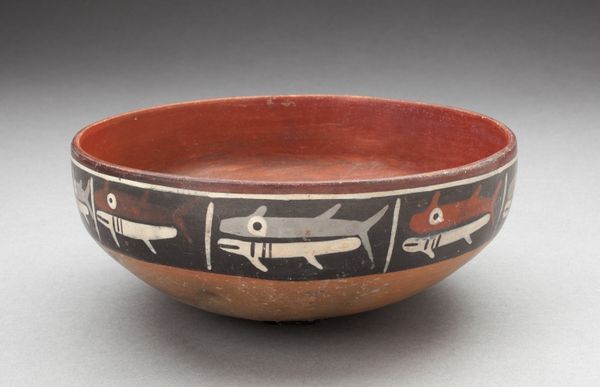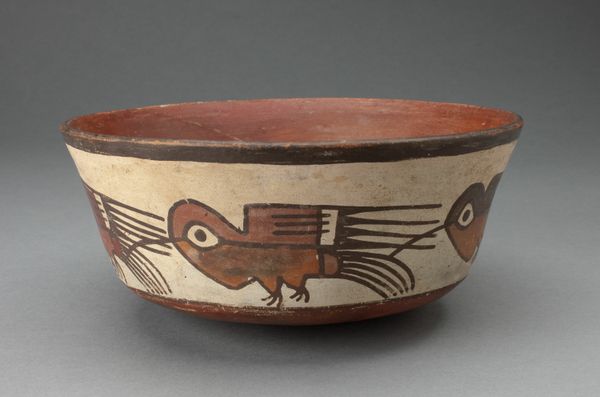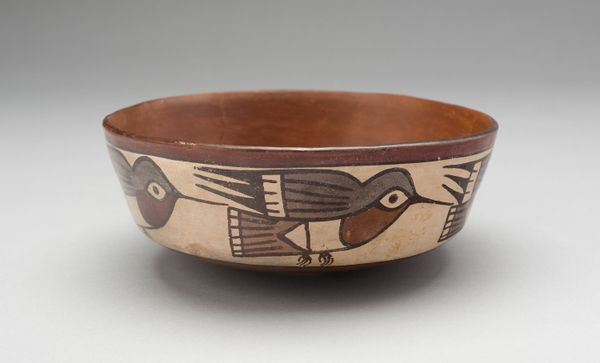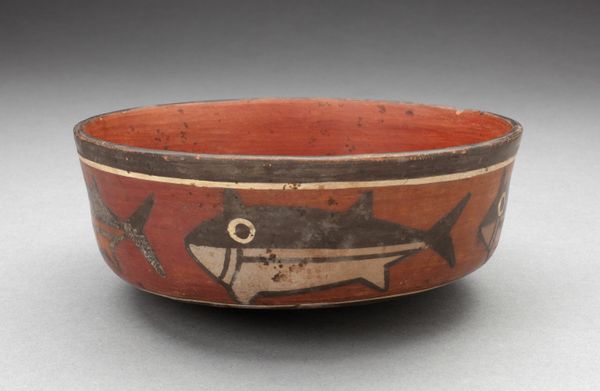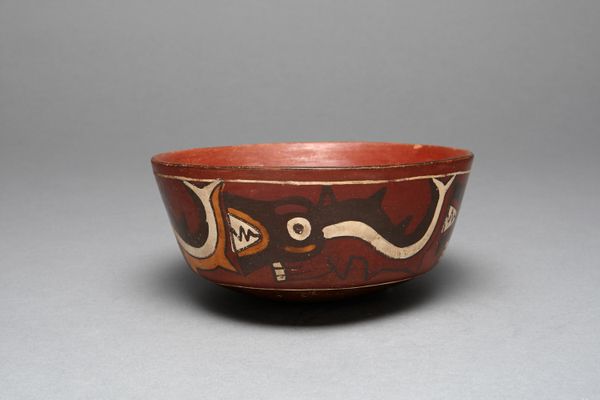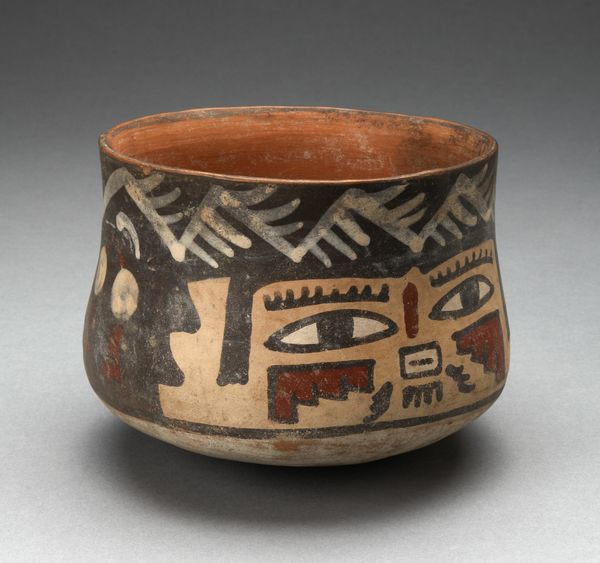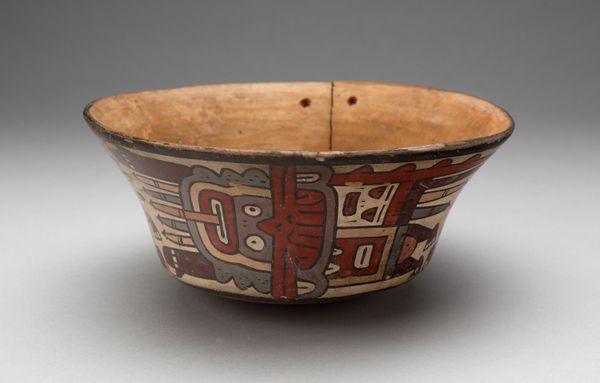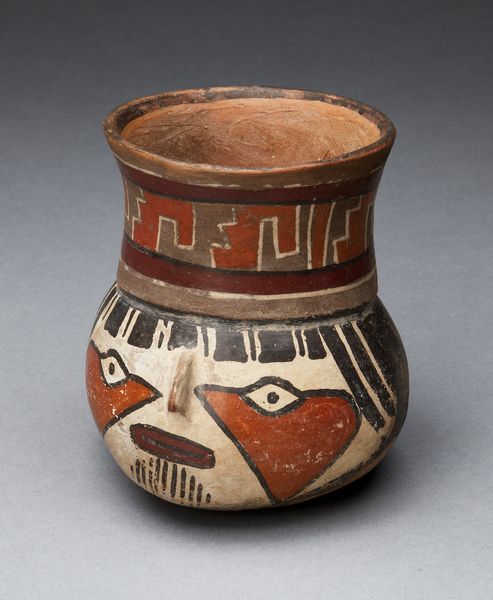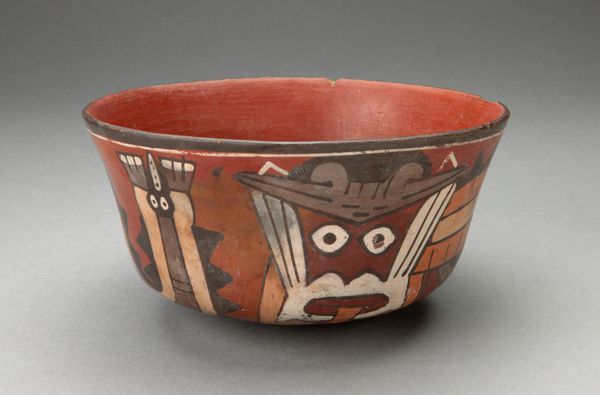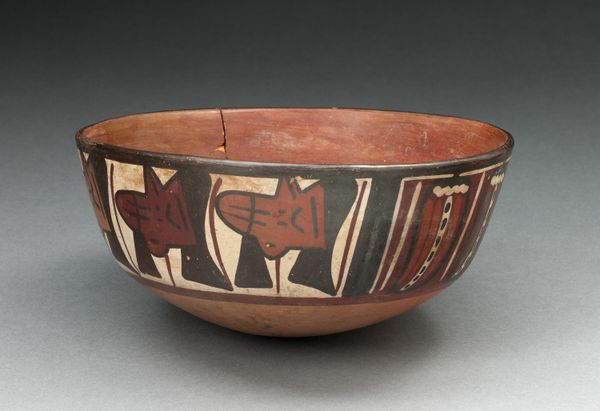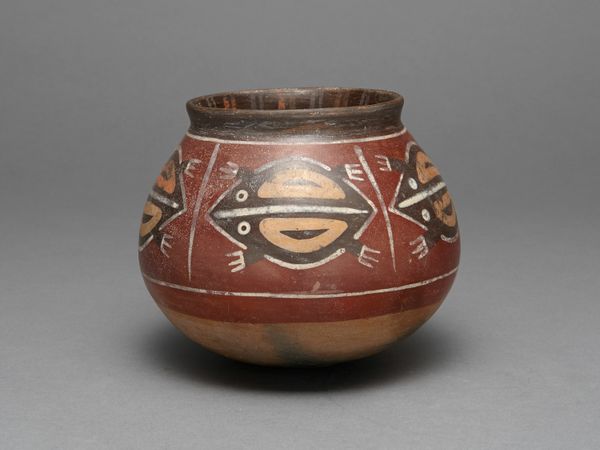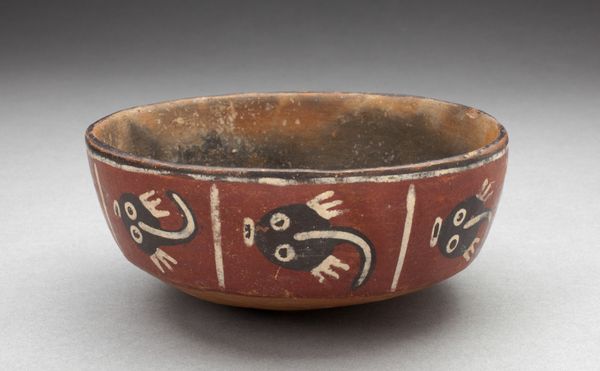
ceramic
#
ceramic
#
figuration
#
ceramic
#
indigenous-americas
Dimensions: 5.1 × 10.3 cm (2 × 4 1/16 in.)
Copyright: Public Domain
Curator: This is a Nazca bowl, crafted sometime between 180 and 500 AD. What strikes you first about it? Editor: Immediately, the simple yet dynamic arrangement of fish leaping off the pale surface, their fins slicing through the emptiness. It almost feels playful, yet the subject matter—these sea creatures—lends it a certain gravitas. Curator: Absolutely. Nazca ceramics, including this bowl, were not merely decorative. They played vital roles in ritual and daily life. Notice how the painting entirely dictates how we perceive this functional item; consider that museums display ceramics in a new sociopolitical manner. Editor: The fish, or perhaps sharks, aren't rendered naturalistically, but symbolically. I'm particularly drawn to their stylized eyes, large and round, suggestive of vision, perhaps knowledge, certainly survival. The painting is imbued with a sense of respect for these creatures of the sea. What about the bowl itself? It is of high quality given its age and history. Curator: Nazca pottery is recognizable for its vibrant polychrome decoration, although this bowl demonstrates the expert handling of color through an earlier, subtler palette. Its preservation provides vital evidence about trade networks; how were people relating to the Pacific Ocean at the time, and what did it represent culturally? Editor: And that access would have likely been gendered and hierarchical, with specific people engaging with the water and associated belief systems. This bowl prompts reflection on whose experiences are centered, or obscured, when viewing art objects. How did social norms of the Nazca society influence the perception and symbolism of aquatic creatures and other natural life? Curator: It makes one question what rituals this ceramic was witness to, too. In that sense, what we can learn of ritual use provides a more meaningful encounter than, for example, appreciating it merely as an early ceramic with skilled brushstrokes. It's a chance to reconsider museums' purpose, also. Editor: A potent reminder that even the most seemingly simple designs can speak volumes about cultural priorities. And objects themselves are living, moving embodiments of ideas around identity and lived experiences. I’ll carry these impressions long after our tour ends today.
Comments
No comments
Be the first to comment and join the conversation on the ultimate creative platform.

